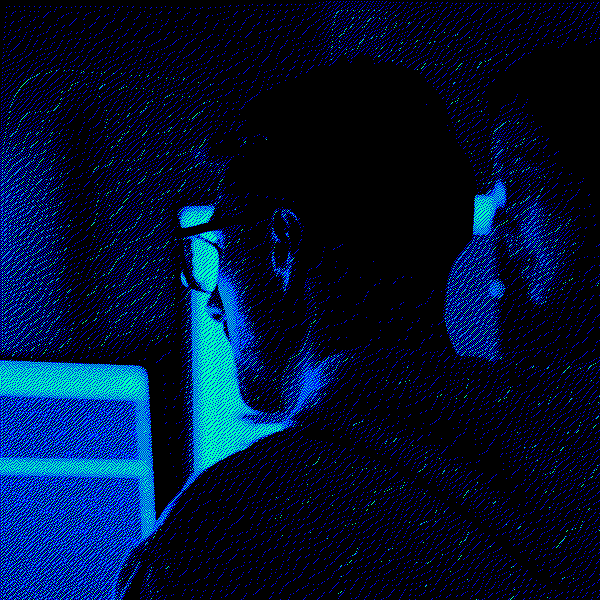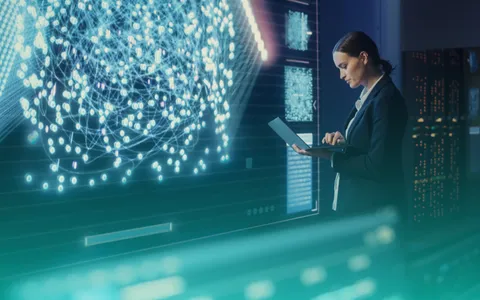How AI-Enhanced Helpdesk Balances Automation and Human Expertise
Having led a managed service provider through countless shifts in technology, I've seen trends come and go. Each new wave promises efficiency, but the ones that last are the ones that make people more effective. The same is true for the help desk. AI is changing how support operates, but not by replacing technicians. It's changing it by giving them the time, focus, and clarity to do their best work.
Many companies think automation is a shortcut to cutting costs. In reality, it's a way to raise the ceiling on what their team can accomplish. The future of IT support isn't machines or humans. It's both working together in the right balance.
The Myth of Full Automation
The idea of a self-running help desk is appealing. Tickets get logged, categorized, resolved, and documented automatically. No delays. No backlogs. No payroll.
Except that's not how real life works.
When companies chase full automation, they often end up with the opposite result. Users get frustrated by bots that don't understand their requests. Technicians spend more time cleaning up AI mistakes than solving actual problems. Escalations grow, context gets lost, and service quality drops.
Support isn't a factory line. It's a human experience built on communication, trust, and problem-solving. That's where many organizations go wrong, they confuse automation with improvement.
Where Automation Actually Works
The value of AI in the help desk isn't about removing people. It's about removing friction. Used correctly, AI eliminates repetitive tasks and clears the way for better conversations between users and technicians.
Here are the areas where automation consistently adds measurable value:
- Ticket categorization and routing: Requests are sorted and assigned instantly based on language, priority, and history.
- Auto-documentation: Notes and resolutions are written in real time, reducing administrative overhead.
- Sentiment recognition: The system detects frustration or urgency in messages and flags them for faster follow-up.
- Pattern detection: Recurring issues are grouped together, helping identify root causes before they escalate.
- Performance analytics: Trends and bottlenecks are surfaced automatically, giving leaders insight without manual reporting.
When these capabilities run in the background, the help desk feels faster, cleaner, and more consistent. But automation alone doesn't build trust, people do.
Where Humans Make the Difference
Even the best AI cannot understand the full context of a user's frustration, or the nuance of a production outage that affects revenue. That's where experienced technicians shine.
Humans bring judgment, empathy, and adaptability, qualities that no algorithm can replicate. They make real-time decisions that weigh business priorities, risk, and user experience in ways automation simply cannot.
Here's where human expertise matters most:
- Complex problem-solving: Diagnosing multi-system issues or infrastructure failures.
- User communication: Translating technical information into reassurance and clear next steps.
- Root cause analysis: Determining why issues happen, not just resolving the symptom.
- Strategic improvement: Identifying gaps in process, security, or adoption that automation cannot see.
Automation amplifies what people do well. It does not replace it.
The Hybrid Model in Practice
In a balanced help desk, AI and human expertise work together as a single workflow. AI manages the routine, and people handle the relationships. The transition is seamless, not competitive.
A user submits a ticket describing a problem. AI reads the language, classifies the request, checks for similar past issues, and summarizes the context. By the time a technician sees it, half the work is already done. They can focus entirely on solving the problem, not sorting it.
The same system generates clean notes automatically when the ticket is resolved. That documentation feeds back into the knowledge base, making the next interaction faster and more accurate.
The result is a self-improving cycle: every ticket strengthens the system, and every technician becomes more efficient.
Why This Model Outperforms Traditional Help Desks
Traditional help desks rely heavily on manual triage, unstructured documentation, and linear escalation paths. Over time, that leads to bottlenecks, inconsistent quality, and technician fatigue.
AI-enhanced support flips that model. It doesn't just track what's happening, it helps manage and predict it. This creates several advantages:
- Faster response and resolution times through automatic prioritization.
- Reduced backlog and burnout because repetitive work is handled by the system.
- Higher ticket quality since AI-generated notes maintain consistency and clarity.
- Smarter resource allocation as analytics highlights where the most time and effort go.
- Better user satisfaction because communication feels faster, smoother, and more personal.
When executed well, automation becomes invisible. Users simply experience better service, and technicians experience less frustration.
Avoiding Common Pitfalls
The biggest risk in adopting AI-enhanced support isn't the technology, it's the mindset. Many teams implement automation reactively, layering it over old habits instead of rethinking their workflows.
A few lessons learned over the years:
- Start small. Automate what slows your team down the most and build from there.
- Keep the human loop. Every automated action should have human oversight until the system proves consistent.
- Document the new process. AI works best when it learns from clean data and repeatable steps.
- Train continuously. Both your people and your AI need ongoing refinement to stay aligned.
The goal isn't to remove people from the equation. It's to let them focus where their impact is greatest.
The Cultural Impact of Balance
Technology alone doesn't modernize a help desk. Culture does. When automation is viewed as an ally, not a threat, technicians feel supported rather than replaced.
The shift toward AI-enhanced support has made IT roles more rewarding. Instead of spending hours on ticket sorting or repetitive fixes, teams can tackle higher-value projects. They learn faster, communicate better, and take pride in faster resolutions that actually stay fixed.
Leaders see the difference too. Instead of reactive chaos, they get consistent reporting, predictable workloads, and measurable progress. That balance is what defines the modern help desk.
Building a Modern Help Desk Without Losing the Human Touch
A modern help desk is not about choosing between speed and service. It's about designing an environment where both coexist naturally.
Automation delivers speed, accuracy, and scale. Humans deliver context, care, and judgment. Together, they create support experiences that are efficient, empathetic, and reliable.
If your help desk is too slow, too manual, or too inconsistent, the fix isn't to replace your people with machines. It's to give your people the kind of intelligent assistance that makes them more effective.
AI handles the routine. Humans handle what matters.
That is the balance every modern help desk should strive for.




